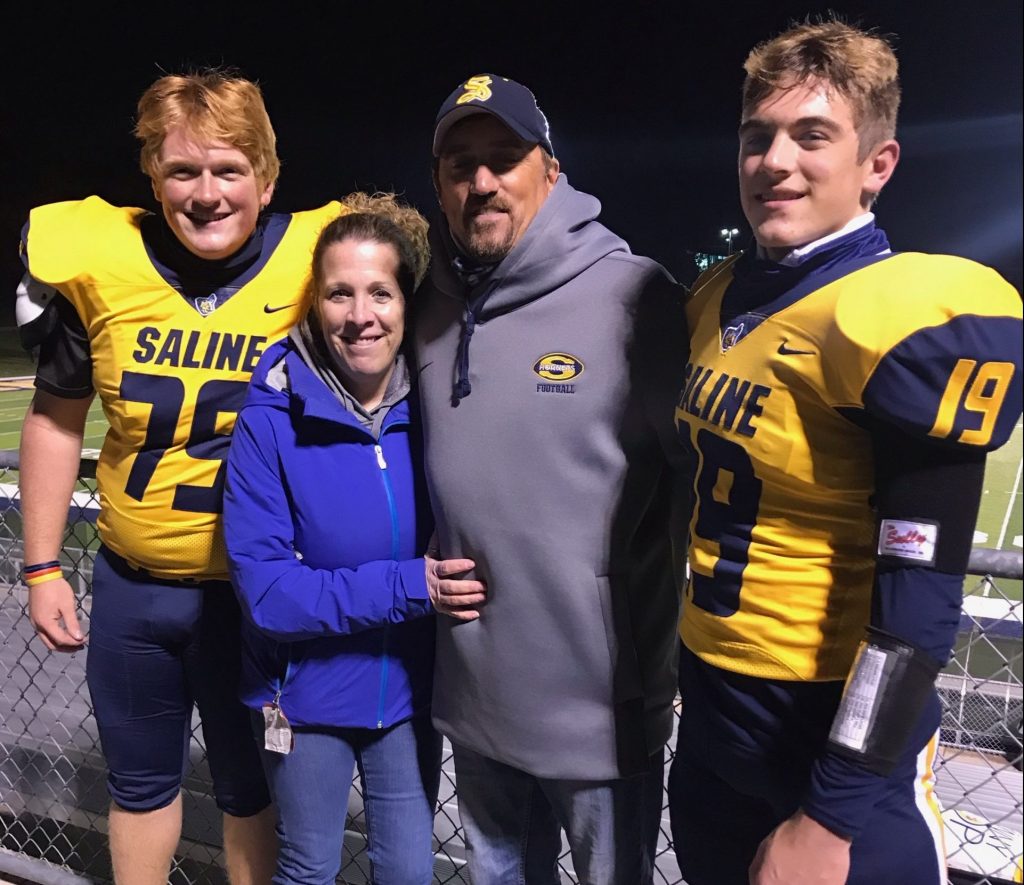A Father’s Perspective: Mat
In the first grade, my son Luke began complaining of vision issues, such as blurriness and double vision. To help correct this, we brought him to an optometrist who prescribed him glasses to help him see. However, over the next five to six years, Luke’s vision continued to decline, causing my wife and I to realize that something more serious must be going on with his eyes. What we didn’t realize was that our son was living with a progressive eye disease known as keratoconus.
A Frustrating Time

Despite receiving glasses at a young age, Luke’s vision impacted various aspects of his life, including school. Each year, seeing the board became more challenging, forcing him to squint and making it difficult to focus during class. When reading a book, Luke often found himself skipping lines. At the time, I felt frustrated for him. Many teachers and other people we knew suggested he had ADHD, but I never felt that was the case. Despite his vision issues when he started school, Luke always worked hard and was open to learning and trying new things. Unfortunately, when he faced adversity, his frustration would take over and stop him from accomplishing many things, such as reading, building legos, board games, or watching movies and TV.
As Luke got older and entered high school, his worsening vision and corresponding symptoms became more prominent. Something else that came as a surprise to us was that Luke began experiencing debilitating headaches. Although some of his teachers thought he was making them up to avoid work or taking tests, the headaches persisted at home, so we knew he was telling the truth. Whether he was watching movies, playing sports, working on car engines, or enjoying a hunting outing with me, Luke’s headaches or his inability to see would force him to take breaks and step away from the activity for a little while.
Finally Finding Answers
Throughout his school years, we would visit different optometrists so Luke could take a routine vision exam. There, he would receive an updated contact lens prescription, which always seemed to become less effective about seven or eight months later. Despite this, Luke, his mom and I never suspected anything was seriously wrong. We assumed that each stronger prescription was just par for the course, especially since no doctor had told us otherwise.
In the summer of 2020, while visiting his grandparents for the Fourth of July, Luke’s grandmother noticed he was struggling to read a text message on his phone. Hearing her obvious concern, I realized we needed to get to the bottom of Luke’s vision issues. When we returned home, I reached out to Dr. Christine Curcione, an experienced local optometrist who Luke had recently begun seeing. After carefully examining Luke’s eyes, Dr. Curcione diagnosed him with keratoconus — a progressive eye disease in which the normally round cornea thins and begins to bulge into a cone-like shape, causing distorted vision. This long-awaited diagnosis provided the answer to his ongoing vision issues.
Although this was the first time I had heard of keratoconus, I was not surprised that there was a reason for Luke’s vision issues. I felt immense relief to finally receive an accurate diagnosis for my son.
To find a doctor near you to get screened for keratoconus, use our locator tool.